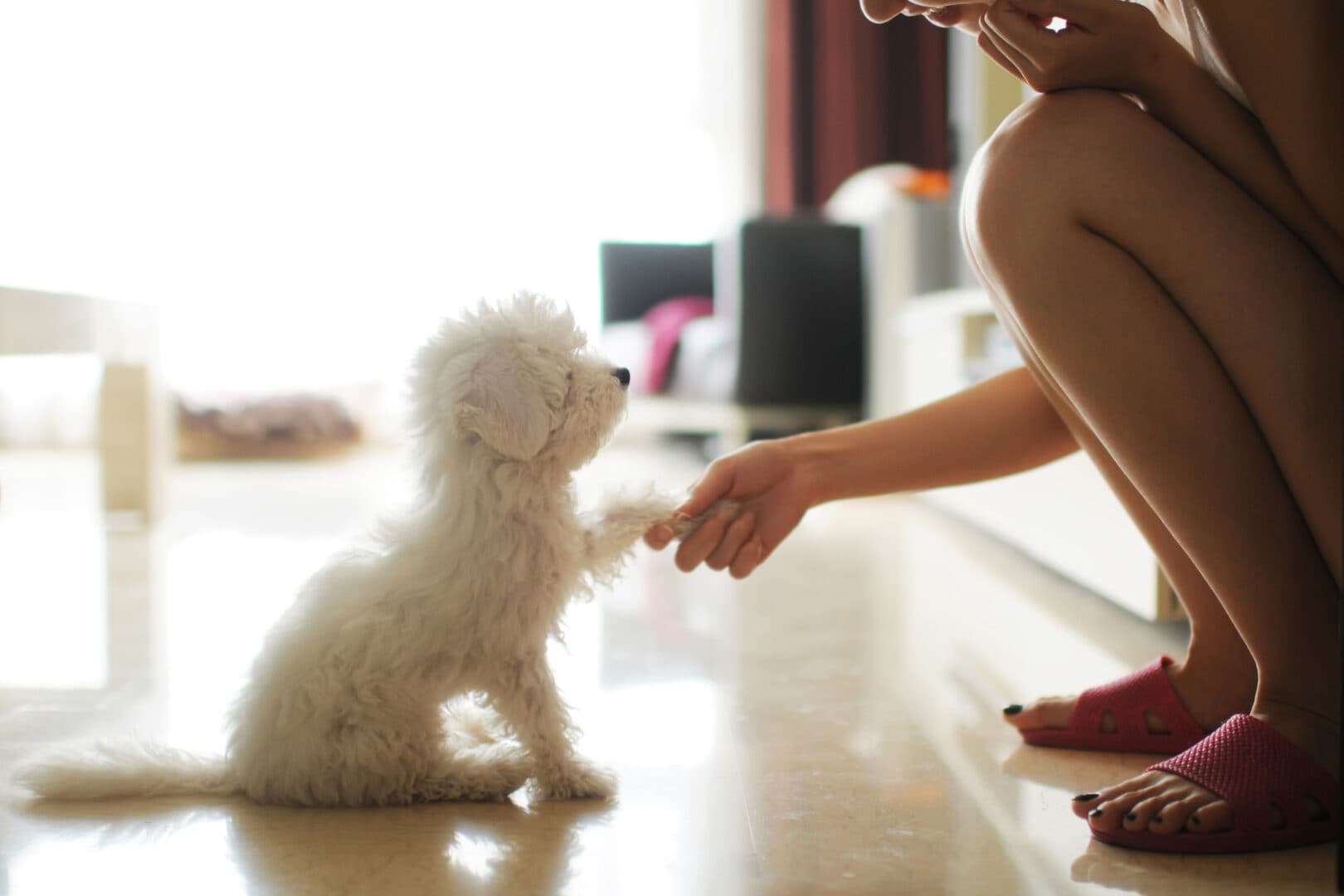Does your dog hide behind you at the park when other dogs approach? Does your four-legged friend bark in fear when new people come round? If so, you face a difficult challenge. Though you want to make sure your pet is comfortable, you don’t want their nervous tendencies to stop them enjoying new friendships, both human and canine.
Here are 11 tips on how to introduce your pup to new people and other dogs:
How to introduce dogs to new people
Helping a shy or fearful dog get used to new people, sounds and situations doesn’t happen overnight. Here are five tips on how to introduce dogs to new people in a comfortable, non-threatening way.
1. Confine your dog to a separate room until everyone has settled in
If you’re inviting someone new to your home, you should keep your dog confined in a separate room until everyone is settled in and sitting down.
2. Follow their lead
You should never allow the new person to approach, speak to or touch your dog until your pet has made the first move to show they’re OK with this type of contact.
3. Try a treat
Without making eye contact with your dog, the new person should hold out dog treats or drop them on the floor nearby. During this process, the new person should stand sideways or in a crouching position.
4. Don’t reward familiar behaviours
If you reward your dog for continuing to show fear or shyness, you will delay their progress and only make it more likely that they will continue to engage in a behaviour that doesn’t make life easier for them or for you.
5. Be patient
If your dog likes the look of the treats on offer, they will eventually feel confident enough to approach the new person—but prepare for this to take a while. Slow and steady wins the race: rushing the process may only intensify your dog’s feelings of fear or shyness.
How to introduce dogs to other dogs
You can help your dog feel comfortable meeting other animals using positive reinforcement, counter-conditioning and practice with a familiar and friendly dog. Here are six tips on how to properly introduce your dog to a potential new playmate.
6. Stick to neutral territory
Make sure you begin the process in a controlled environment that has little to stimulate or distract your dog.
7. Enlist the help of a familiar face
Learn from an expert: start by introducing your pet to a confident dog you know well, who’s comfortable around other canines. This will help you learn how to handle these types of introductions.
8. Start slowly
When making this initial introduction, make sure that both dogs are properly on the lead. Keep your distance from the other dog and their handler at first and reward your dog for calm behaviour. You can then approach the new dog slowly. When the dogs eventually meet up, you can allow them to sniff and circle around each other. Afterwards, you should walk away with your dog.
9. Reward brave behaviour
Throughout this introduction process, you should reward your dog when they display confident behaviour, as this will encourage a positive association with meeting new dogs.
10. Be gentle with them
Using tight leads or pulling dogs apart can cause a negative reaction in your pet.
11. Practice makes perfect
Depending on just how vulnerable your dog feels in new situations, you may have to practise this process over and over again for them to feel truly confident around other dogs. Once they’re able to build up this confidence, you both will feel more comfortable and relaxed when you go out and about.
Why some dogs have a tougher time meeting new people and pets
It’s difficult to know what makes a dog feel more fearful of certain dogs or people than others. Many experts agree that positive experiences of socialising at an early age are the key to confident, well-behaved pets.
The critical stage is between 3 and 12 weeks of age. This is a good time to create happy experiences for your puppy, so they build positive associations with a range of new things:
- People: men and women, children and adults, people in uniform and men with beards and hats
- Other dogs: big and small, reserved and friendly
- Other animals: cats and any smaller household pets
- Environments; grass, concrete and water
As with humans, formative experiences are key: if a puppy has a bad time with something early in their development, they can develop a phobia that’s hard to shift.
By following these tips and best practices, you can help your dog face and overcome their fears and live a happy, confident life.
